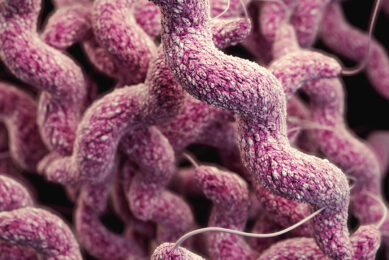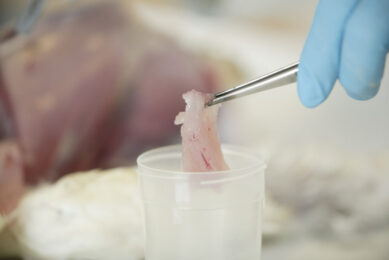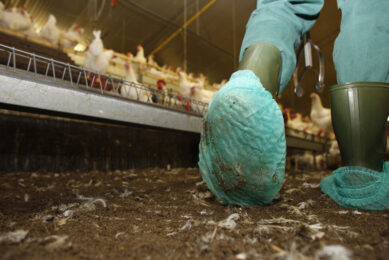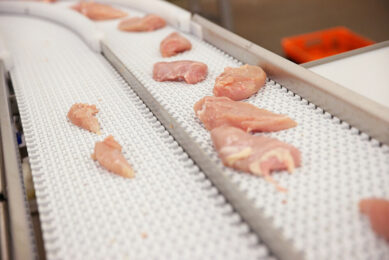Phage therapy reduces Campylobacter in poultry
A study by researchers at the University of Nottingham in the UK investigated the therapeutic value of Campylobacter phage CP220 to reduce numbers of Campylobacter in the caeca, and upper and lower intestines of experimentally infected chickens.
Bacterial gastroenteritis is often caused by Campylobacter jejuni and Campylobacter coli, with many occurrences attributed to the handling and consumption of poultry meat.
Campylobacter can be isolated from more than 80% of chickens produced for meat following slaughter. This can present a significant food safety risk through the consumption of undercooked poultry meat or through cross contamination of other foods during the preparation of poultry.
Bacteriophages are naturally occurring predators of bacteria. They can be effective antibacterial agents due to their specificity against a particular bacterial species and lack of impact on other flora. The targeted use of phages to reduce the numbers of Campylobacter entering the food chain at farm level could therefore be a potentially useful intervention strategy. Selection of the most appropriate phages and their dose optimisation are key factors for the success of phage therapy.
Phage CP220 was administered to both C. jejuni- and C. coli-infected birds. A 2-log cfu/g decline in caecal C. jejuni counts was observed after 48 hours of phage therapy at 7-log pfu dose. The incidence of phase resistance was 2%. A 9-log pfu dose of CP220 was required to achieve a similar reduction in C. coli-infected birds. Phage therapy could offer a potentially sustainable biological control measure for the reduction of Campylobacter in farmed poultry.
Related link:













